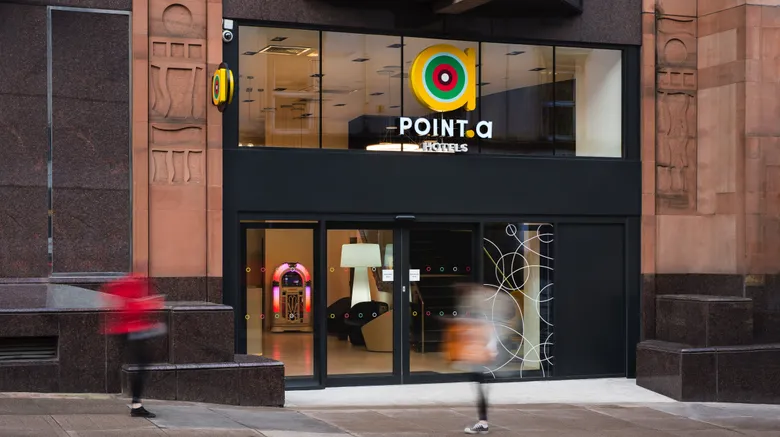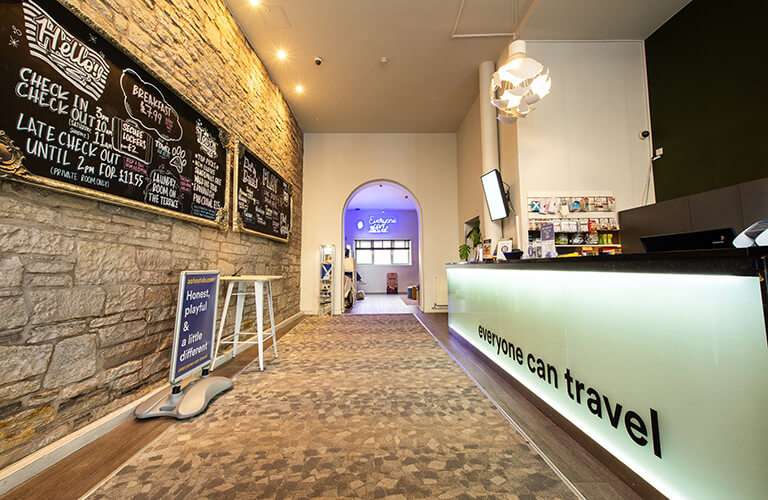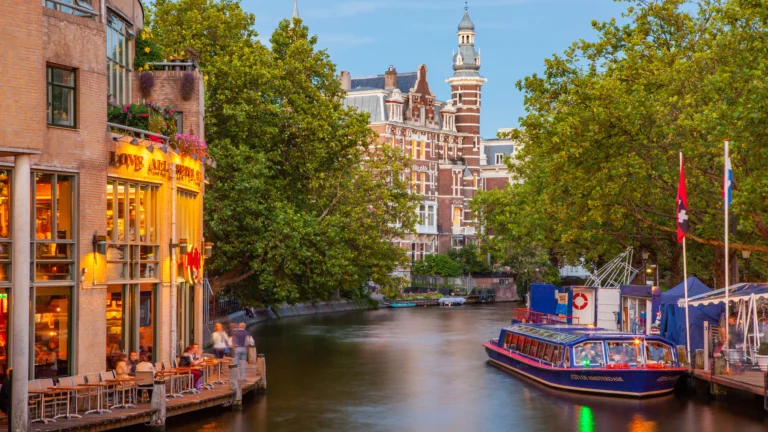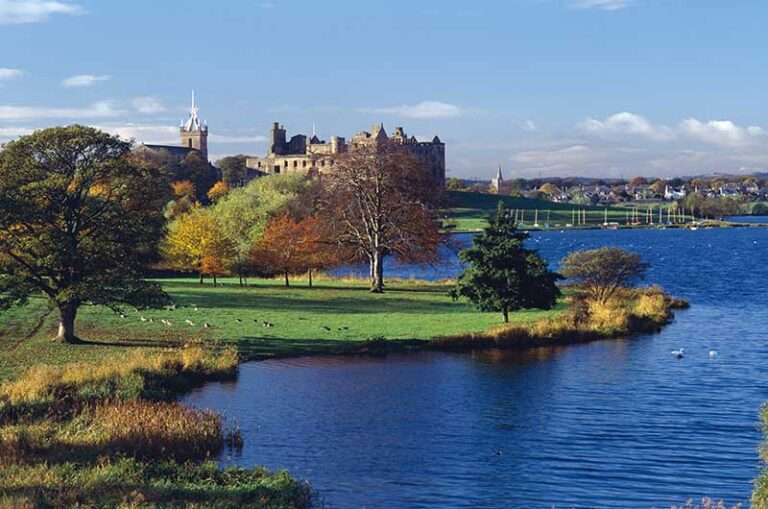If you’re wondering what life in Scotland would be like as a digital nomad, this Scotland Guide will answer any question that you may have. I spent 6 months working and living in Aberdeen, Glasgow, and Edinburgh. I look forward to returning as a more experienced traveler. This post will cover everything you need to know about living, working, and exploring Scotland as a digital nomad.

Can I be a Digital Nomad in Scotland?
Absolutely! Scotland is becoming a popular destination for digital nomads due to its stunning landscapes, walkable cities, and reliable internet connectivity. With plenty of coworking spaces, cafes, and a welcoming community, you’ll find it a great place to live and work remotely. The country’s blend of historic charm and modern amenities makes it an ideal spot for balancing work and leisure.

What is the Best Month to Visit Scotland?
The best months to visit Scotland are between May and September. During this time, the weather is milder, and the days are longer, allowing you to make the most of your time exploring the beautiful scenery and historic sites. Spring and summer bring a vibrant array of festivals and outdoor activities. Keep in mind that Scotland’s weather can be unpredictable, so always pack layers.

What Language is Spoken in Scotland?
English is the primary language spoken in Scotland, although you’ll also hear Scots and Scottish Gaelic in some regions. However, you’ll get by just fine with English everywhere you go. The Scottish accent can be strong, but locals are friendly and usually happy to help if you need anything repeated.

What Currency is Used in Scotland?
Scotland uses the British Pound Sterling (£). Credit and debit cards are widely accepted, but it’s always good to have some cash on hand for smaller establishments or remote areas. ATMs are readily available in cities and towns. Contactless payments are also very common and convenient for everyday purchases.

Intercity Travel: Getting Around Scotland
Scotland has a well-connected transportation network. Trains, buses, and flights link the major cities, and renting a car is an excellent option for exploring the countryside. Here’s a quick guide on intercity travel options:
- Trains: ScotRail offers extensive rail services, with frequent connections between major cities like Glasgow, Edinburgh, and Aberdeen. The trains are comfortable, reliable, and provide scenic views of the Scottish countryside.
- Buses: Companies like Citylink and Stagecoach operate comprehensive bus networks. Buses are a cost-effective option and often reach places not served by trains.
- Flights: For longer distances or remote areas, domestic flights are available. Airports in Glasgow, Edinburgh, and Aberdeen serve various destinations within the UK and beyond. I usually start with Skyscanner for booking flights.
- Car Rentals: Renting a car gives you the freedom to explore off-the-beaten-path destinations at your own pace. Just remember to drive on the left side of the road!

Accommodation in Scotland
Scotland offers a variety of accommodation options to suit different budgets and preferences. Whether you prefer the bustling city life or the tranquility of the countryside, you’ll find something that suits your needs.
- Hostels: Perfect for budget travelers and those looking to meet fellow nomads. Popular options include Safestay in Edinburgh and SYHA Hostels across the country.
- Budget Hotels: Affordable and comfortable, with options like Travelodge and Premier Inn available in most cities.
- Mid-Range Hotels: For a bit more comfort, consider staying at places like Jurys Inn or Holiday Inn.
- Luxury Hotels: Treat yourself to a stay at high-end hotels like The Balmoral in Edinburgh or The Gleneagles Hotel in Perthshire.
- Serviced Apartments: Ideal for longer stays, with options like Fraser Suites in Glasgow and Edinburgh.
- Coliving Spaces: Join a community of like-minded individuals in places like The Collective in Glasgow.

Coworking in Scotland
Scotland is well-equipped for digital nomads, with numerous coworking spaces and cafes offering free Wi-Fi. Here are some top coworking spaces to consider:
- CodeBase (Edinburgh and Aberdeen): A tech hub offering coworking and event spaces.
- Regus (Various Locations): Flexible workspace solutions with multiple locations.
- Spaces (Various Locations): Modern coworking spaces with a global network.
- The Melting Pot (Edinburgh): Scotland’s center for social innovation.
- Collabor8te (Glasgow): A central coworking space with a creative community.
Dining in Scotland

Scotland’s culinary scene is diverse, offering everything from traditional Scottish dishes to international cuisine. Here are some must-try dining experiences:
- Traditional Scottish: Enjoy haggis, neeps, and tatties at restaurants like The Gannet in Glasgow or The Witchery by the Castle in Edinburgh.
- Seafood: Scotland’s coastal location means fresh seafood is always on the menu. Check out Ondine in Edinburgh or The Silver Darling in Aberdeen.
- Indian: Scotland has a rich Indian food scene, with popular spots like Mother India in Glasgow and Dishoom in Edinburgh.
- Healthy Cafes: For a lighter bite, try Hula Juice Bar in Edinburgh or Roots, Fruits, and Flowers in Glasgow.
- International Cuisine: Experience global flavors at places like Ox and Finch in Glasgow or Moonfish Cafe in Aberdeen.

Pros and Cons of Being a Digital Nomad in Scotland
Pros
- Scenic Beauty: Scotland is renowned for its breathtaking landscapes, from the Highlands to the rugged coastlines. There’s always a stunning view or a picturesque trail to explore.
- Friendly Locals: Scots are known for their hospitality and friendliness. You’ll feel welcomed and find it easy to strike up conversations and make connections.
- Rich History and Culture: Scotland is steeped in history, with castles, museums, and historic sites to visit. The cultural scene is vibrant, with numerous festivals and events throughout the year.
- Reliable Internet: Major cities and towns offer reliable internet connectivity, which is essential for digital nomads.
- Workspaces: There are plenty of coworking spaces and cafes with free Wi-Fi, making it easy to find a place to work.
Cons
- Weather: Scotland’s weather can be unpredictable, with frequent rain and varying temperatures. Always pack layers and waterproof clothing.
- Cost of Living: While generally cheaper than London, some areas, especially Edinburgh, can still be expensive. Budget carefully to manage your expenses.
- Limited Sunshine: If you thrive on sunshine, Scotland’s often overcast skies might be a downside. The long daylight hours in summer are a plus, but winters can be quite dark.
- Remote Areas: While cities are well-connected, remote areas might have limited amenities and services. Plan ahead if you intend to explore the countryside.
- Accents: The Scottish accent can be challenging to understand at first, but you’ll get used to it with time.

Tips for Digital Nomads in Scotland
- Connectivity: Scotland has excellent internet coverage, but always check the Wi-Fi quality at your accommodation and coworking spaces.
- Cost of Living: While Scotland can be more affordable than London, costs vary between cities. Glasgow and Aberdeen are generally cheaper than Edinburgh.
- Weather: Be prepared for all seasons in a single day. Pack waterproof clothing and layers to stay comfortable.
- Local SIM Cards: Consider getting a local SIM card for better mobile data rates. Providers like EE, O2, and Vodafone offer good coverage.
- Networking: Join local meetups and events to connect with other digital nomads and locals. Websites like Meetup and Eventbrite are great for finding events.

Frequently Asked Questions About Being a Digital Nomad in Scotland
Is Scotland a good place for digital nomads?
Yes, Scotland is a fantastic destination for digital nomads. It offers reliable internet connectivity, a range of coworking spaces, vibrant cities, and stunning landscapes. The friendly locals and rich cultural heritage add to its appeal.
Do I need a visa to stay in Scotland?
If you are from an EU/EEA country or Switzerland, you can stay in Scotland for up to 90 days without a visa. Americans can stay for 6 months with just our USA Passport. For longer stays or if you are from other countries, you may need a visa. Check the UK government website for the most up-to-date information.
What are the best cities in Scotland for digital nomads?
The best cities for digital nomads in Scotland are Edinburgh, Glasgow, and Aberdeen. Each offers a unique blend of workspaces, amenities, and cultural experiences. Smaller cities like Dundee and Inverness are also worth considering.
How is the internet connectivity in Scotland?
Internet connectivity in Scotland is generally excellent, especially in urban areas. Most coworking spaces, cafes, and accommodations offer high-speed Wi-Fi. Rural areas may have slower connections, so plan accordingly if you need reliable internet.
What are the best coworking spaces in Scotland?
- CodeBase (Edinburgh and Aberdeen)
- Regus (Various Locations)
- Spaces (Various Locations)
- The Melting Pot (Edinburgh)
- Collabor8te (Glasgow)
What is the cost of living in Scotland?
The cost of living varies by city. Edinburgh is the most expensive, followed by Glasgow and Aberdeen. On average, budget around £1,500-£2,000 per month for rent, food, transport, and leisure.
What is the climate like in Scotland?
Scotland has a temperate maritime climate. Expect mild summers with temperatures around 15-20°C (59-68°F) and cold, wet winters averaging 0-5°C (32-41°F). Rain is common, so always have waterproof clothing.
What kind of accommodation is available in Scotland?
Accommodation options range from hostels and budget hotels to mid-range hotels, luxury hotels, serviced apartments, and coliving spaces. Prices vary, so there’s something to suit every budget.
How safe is Scotland for digital nomads?
Scotland is generally very safe for digital nomads. Crime rates are low, and cities are walkable and well-lit. Always take standard precautions, like keeping your belongings secure and being aware of your surroundings.
What are some must-visit places in Scotland?
Don’t miss:
How is the public transportation in Scotland?
Public transport is reliable and extensive. Trains and buses connect major cities, and car rentals are available for rural exploration. In cities, buses and local trains are frequent and efficient.
Is it easy to find vegetarian/vegan food in Scotland?
Yes, vegetarian and vegan options are widely available in Scotland. Many restaurants and cafes offer plant-based dishes. Cities like Edinburgh and Glasgow have numerous vegan-friendly eateries.
What are some popular Scottish dishes I should try?
Try these traditional dishes:
- Haggis: A savory pudding containing sheep’s heart, liver, and lungs.
- Cullen Skink: A creamy fish soup.
- Cranachan: A dessert made with cream, whisky, honey, and raspberries.
Can I use my mobile phone in Scotland?
Yes, you can use your mobile phone in Scotland. Consider getting a local SIM card from providers like EE, O2, or Vodafone for better rates and coverage.
What is the nightlife like in Scotland?
Scotland has a vibrant nightlife scene, especially in cities. Enjoy traditional pubs, modern bars, nightclubs, and live music venues. Edinburgh and Glasgow are particularly known for their lively nightlife.
Are there any cultural differences I should be aware of?
Scotland has its unique cultural norms. Scots are generally friendly and polite. Tipping is appreciated but not obligatory. Respect local traditions and participate in cultural events to enhance your experience.
What is the healthcare system like in Scotland?
Scotland has an excellent healthcare system, with the National Health Service (NHS) providing free or low-cost medical care to residents. Visitors may need travel insurance for coverage.
Can I drive in Scotland with my foreign driver’s license?
Yes, you can drive in Scotland with a valid foreign driver’s license for up to 12 months. After that, you may need to exchange it for a UK license, depending on your country of origin.
What are the best ways to network with other digital nomads in Scotland?
Join local meetups and events on platforms like Meetup and Eventbrite. Coworking spaces often host networking events. Social media groups and online forums are also great for connecting with fellow nomads.
How can I stay healthy and active in Scotland?
Scotland offers numerous outdoor activities like hiking, cycling, and water sports. Cities have gyms, yoga studios, and sports clubs. Take advantage of the beautiful natural scenery for regular exercise.
What are the work-life balance and working hours like in Scotland?
Work-life balance is generally good in Scotland. Standard working hours are 9 am to 5 pm, but remote work offers flexibility. Use the long summer days to explore and enjoy outdoor activities.
What are some festivals and events I should attend in Scotland?
Don’t miss:
- Edinburgh Festival Fringe: The world’s largest arts festival.
- Hogmanay: New Year celebrations with fireworks and street parties.
- Burns Night: Celebrating poet Robert Burns with haggis and whisky.
How Do I Handle Banking and Finances in Scotland?
As a non-resident, opening a local bank account in Scotland might not be possible. However, you can use alternative financial services designed for international travelers and digital nomads:
- Wise (formerly TransferWise): Wise offers multi-currency accounts with competitive exchange rates and low fees. You can hold and convert multiple currencies and get a debit card for easy spending.
- Revolut: Revolut provides a digital banking experience with features like international money transfers, cryptocurrency exchange, and budgeting tools. It also offers a multi-currency card that can be used globally.
- N26: This online bank offers a seamless banking experience with a user-friendly app. You can manage your money, make international transfers, and use a Mastercard debit card.
- Monzo: Monzo is a UK-based digital bank that offers an intuitive mobile app, budgeting features, and fee-free spending abroad. While it primarily serves UK residents, it can be a useful tool if you have a UK address.
- PayPal: PayPal is a widely accepted payment platform that allows you to send and receive money globally. It’s a convenient option for online purchases and transferring funds.
These services make sure you can manage your finances efficiently while in Scotland. They offer flexibility, low fees, and easy access to your money, making them ideal for digital nomads.
What are the most scenic areas to visit in Scotland?
Some of the most scenic areas include:
- The Isle of Skye
- Cairngorms National Park
- Glencoe
- Loch Lomond and The Trossachs National Park
- The Outer Hebrides
How can I experience local culture and traditions in Scotland?
Immerse yourself in local culture by attending ceilidhs (traditional dance parties), visiting historic sites, participating in festivals, and engaging with locals. Explore museums and galleries to learn about Scotland’s rich heritage.
Final Thoughts on Digital Nomads in Scotland
Scotland offers a unique blend of history, culture, and modern amenities, making it an excellent destination for digital nomads. Whether you’re working from a cozy cafe in Edinburgh or exploring the rugged Highlands, Scotland promises an unforgettable adventure. Enjoy your time in this beautiful country.
Safe Travels!







We’ve visited Edinburgh a few times in May-July, and always enjoyed it. I would struggle with the limited sunshine outside of the summer season though.